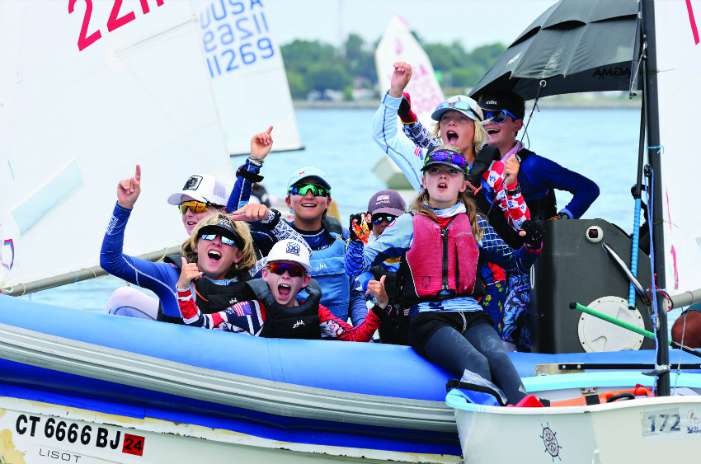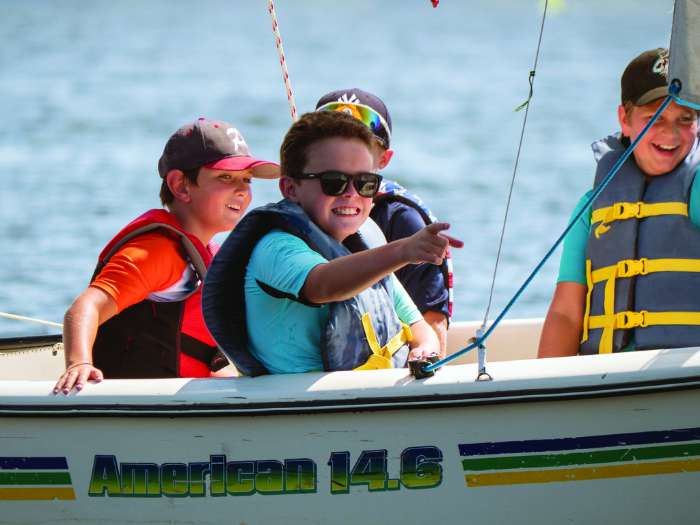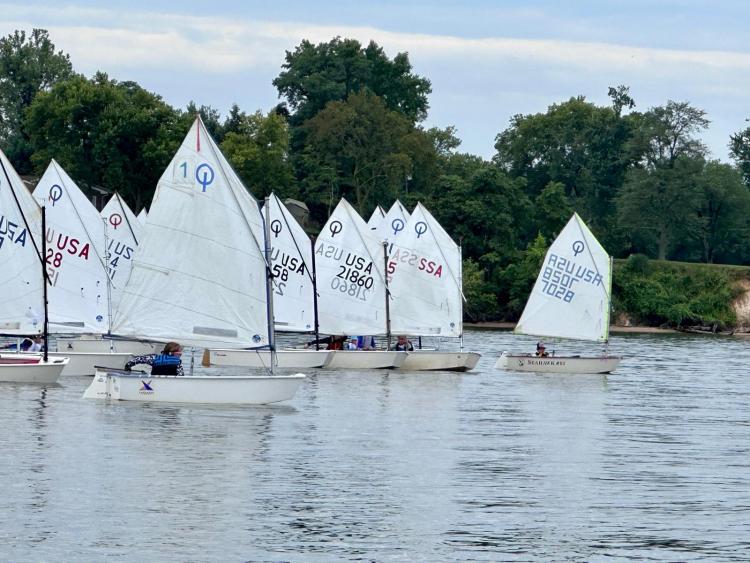Answers to Six Questions That Youth Sailing Parents Tend To Ask
This month we kick off a series of youth sailing articles, beginning with answers to a half dozen questions commonly asked by parents who are new to sailing and/or the youth sailing scene. Stay tuned in the coming months for more on youth sailing news, including coach and sailor interviews and regatta reviews. If you know an inspirational coach or youth sailor that you think should be featured on this page, email [email protected] with your ideas.

Six questions answered:
1. Do we have to buy a boat?
Good news! You do not need to buy a boat for your child to participate in the exciting sport of sailing. Introductory programs at sailing schools and clubs provide boats for beginners and offer plenty of opportunities for kids to build their skills aboard such boats. However, down the road, if a young sailor progresses into youth racing, all teams will require you to either charter a boat from the club or own your own boat.
2. Do kids need to know how to swim?
Since sailing involves being on the water, feeling comfortable in the water is important for safety reasons and for kids to enjoy their time on the water. If your child isn’t yet a confident or proficient swimmer, it’s best to ask about the expectations at any program you’re considering. Some camps administer a swim test at the beginning to ensure everyone’s safety throughout the program. All reputable programs will require that sailing students (of any age) wear lifejackets, regardless of their swimming ability.

3. Are kids grouped by age or ability?
Sailing programs are designed to serve a wide range of participants. They typically group children by age and skill level, ensuring that each child is in a class that suits their abilities. From introductory to advanced, including race teams, there’s a class for everyone. Parents are encouraged to communicate with the program organizers to assess the best fit for their child’s age and abilities. Youth program administrators are adept at grouping young sailors in ways that promote skill building while also ensuring an enjoyable experience for the kids.
4. What kind of gear will my child need?
To get started, you only need a few essentials: a well-fitting US Coast Guard-approved lifejacket, a hat, sunglasses, close-toed shoes (water shoes or sneakers), and sunscreen. While most programs will provide a recommended gear list, these basics will ensure you are ready to go.
Lifejackets are usually provided for introductory classes, but if your child already has one that they like and it is the proper style and fit, they can bring it from home.
As their sailing adventures expand beyond the summer season, they will need additional gear to accommodate colder environments. Program coaches and veteran parents are available to help.

5. What if the weather doesn’t cooperate?
Instructors purposefully introduce young kids to sailing slowly so that they always feel secure and don’t get scared. When it is blowing 15 knots, it’s not the best day for most young beginners to be on the water. There will be days when the littles stay onshore while older kids go out on boats. Trust the instructors to know how much wind your child is ready to experience. Everyone wants to ensure your child has the best possible experience on the water.
Given the variable nature of weather, youth sailing programs have lots of experience with contingency plans that keep kids entertained. Instructors are prepared to facilitate onshore learning, activities, and games when it is stormy. On the other hand, they are equally prepared for entertaining instruction and games, both on and off boats, when there’s no wind. Although you don’t need to worry about kids sailing in hazardous conditions, most programs will sail in light rain. Send a rain jacket!
6. How do kids progress from learning to sail to learning to race?
Transitioning from learn-to-sail to learning to race is an exciting journey. Race teams are typically formed by invitation or through tryouts. If your child is interested in joining, we encourage you to communicate their interests and goals with your coaches. They can provide valuable insight into the selection process and guide your child on what they can do to be invited to join the team.




